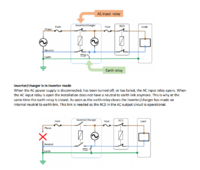Hi all,
I've earthed my consumer to the earthing point under my passenger seat. Someone told me I shouldn't earth the 240v to the van as if there was a fault it would fry my 12v system in the van. Instead I should rely on the red and the earthing back yo the who in the campsite.
Good idea or dangerous, what do you think?
I've earthed my consumer to the earthing point under my passenger seat. Someone told me I shouldn't earth the 240v to the van as if there was a fault it would fry my 12v system in the van. Instead I should rely on the red and the earthing back yo the who in the campsite.
Good idea or dangerous, what do you think?


